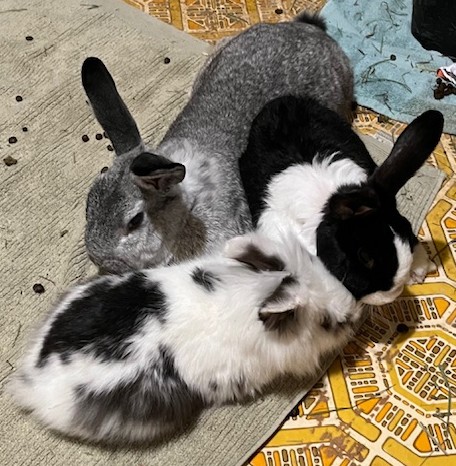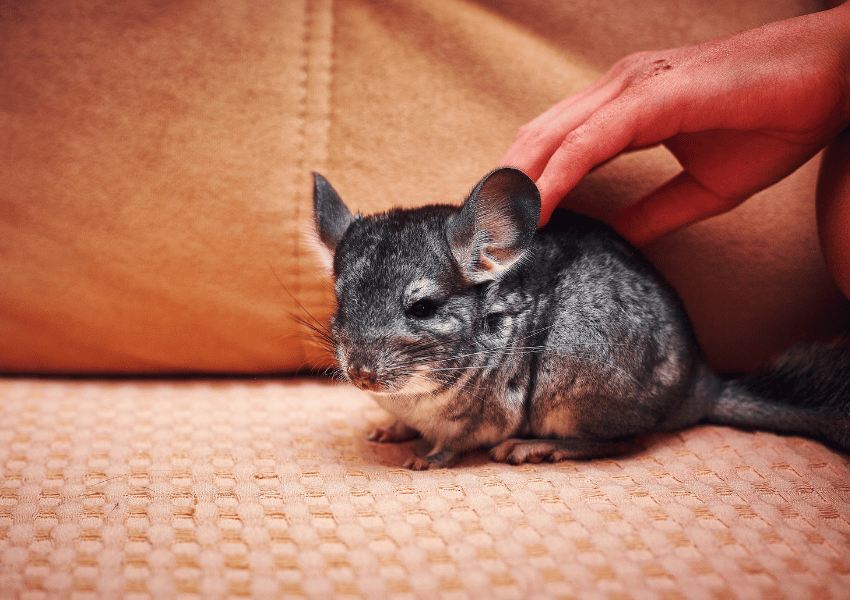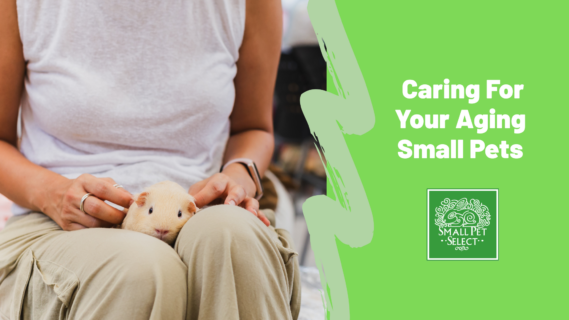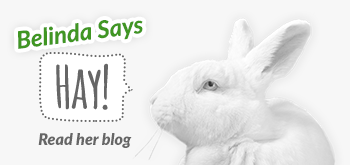Caring for aging small pets you may think, “How long will my (pet) live?”
As a veterinarian, I hear this a lot. And, honestly, usually I say that I don’t know. That it’s hard to tell. That it depends. Everyone’s lifespan, just like with humans, is different. With animals, you have variances among breeds, too.
What I can say is that there are generally accepted ages for when pets are considered “senior”:
- Rabbits: 5-6 years
- Guinea pigs: 4 years
- Chinchillas: 8 years
- Rats: 1.5-2 years
- Mice: 1-1.5 years
- Hamsters: 1.5-2 years
- Gerbils: 2 years
What I can also say is that the better you care for your pet, the better life it has! So read on to find out ways you can help best take care of your small pet as it gets older.
Feed your aging small pet well
As pets age, their metabolism can slow down, meaning a greater chance of weight gain and obesity. And obesity leads to other health issues, which are often more pronounced in older pets.
To help combat this, I recommend feeding your small pet fewer pellets as it gets older (and for rabbits and Guinea pigs, definitely no alfalfa). Continue to give unlimited grass hay (Timothy hay, orchard grass, meadow grass), however, as they need this for dental and gut health! I also recommend cutting back on treats and using some of their daily allotment of greens as treats instead.
Sometimes pets actually lose weight instead of gain it. This can be a sign of illness, so check with your vet if this occurs. However, sometimes it is part of the aging process and your pet may just need some supplemental calories. “Recovery” diets (for example, powdered food meant to be mixed in water and often syringe fed) are often used for this. You may also need to use recovery food if your pet has had a recent surgery or dental issue.
Water should be easy for your pet to get to, and if you notice your pet is drinking more than it usually does, let your veterinarian know since this may indicate a health issue.
Senior pet mobility
As pets get older, they may not move around as easily as they used to. Modifications to their living areas to make them easier to navigate may be in order.
Slick floors, cage bottoms, shelves, and platforms can cause older pets to hurt themselves, so use non-slip surfaces whenever you can. Try rugs or mats on slippery floors and non-slip ramps to higher levels of enclosures. Keep your pet’s litter box, food, and water dish easy for it to get to. And speaking of litter boxes, if your pet is having trouble getting in it (like if you notice urine and feces all around the box but not much in it), try a low-sided box that your pet can just walk in instead of jump in.
In addition, older pets may appreciate extra layers of soft bedding to provide comfort for aging joints and more warmth if desired.
Exercise and enrichment
Like most humans, pets tend to slow down a bit and aren’t as active as they get older. Exercise is still very important, though. For older pets it helps to decrease weight gain, muscle loss, and joint pain and stiffness. Make your pet’s enclosure or living space as large as possible and give it lots of time every day in a safe, pet-proof play area so that it can run around and explore.
Enrichment is still just as important, too! Various types of small pet toys, climbing items, platforms (non-slip), etc. encourage pets to move around (in other words, exercise!) and helps keep their minds working. Social interaction is both a form of enrichment and love, so continue giving your pet cuddles, playing with it, stroking its head, or whatever it has always enjoyed.

“Biscuit, Sterling, and Silver lived to be 10, 13, and 12.5 years old, respectively.” Photo by Amy “Brem” Bremers
Grooming
As your pet gets older, you may have to do some extra grooming for them. Stiff joints and less mobility (and possibly a little pain) may mean it has trouble cleaning itself. You may need to brush out tangles, wipe stuck feces off fur, or clean the outside of ears, for example.
When grooming your pet, notice its skin so that you can detect any skin issues it may be experiencing. Make sure to check your pet’s nails more often, too, since if its nails get too long your pet may have more trouble getting around.
Behavior
Changes in behavior are important to pay attention for as your pet gets older. For example, the following behaviors may be normal aging behaviors or they may indicate health issues such as pain that you’ll want to get checked out by your veterinarian:
- Disorientation
- Nipping at you
- Not appearing to hear things sometimes
- Running away from you
- Jumping at noises it didn’t use to
- Decreased sociability
- Increased anxiety
- Not wanting its favorite foods.

Health and veterinary care
It’s probably not a surprise, but most of the time pets need more health care as they get older. In addition to veterinary care, this means things that you can do at home, such as checking your pet’s skin, eyes, ears, and bottom weekly; massaging your pet to help with arthritis and stiff muscles; changing bedding more frequently; giving pain and other medications as directed by your veterinarian; and watching for any behavior changes.
As far as veterinary care goes, I personally recommend small pets start coming in for checkups twice a year as they get older instead of only once a year. This way I can try to catch and treat health issues sooner. Some of the most common health issues that occur more often as pets get older include dental disease, kidney disease, heart disease, diabetes, and cancer, in addition to obesity and arthritis. Besides asking you questions and thoroughly examining your pet at each visit, your veterinarian may recommend occasional x-rays, bloodwork, and urine analysis to check for these issues.
So worth it!
Although caring for your small pet as it gets older may require a bit more work than when it was young, this extra care can actually increase the bond between the two of you – and that’s worth the effort, I think.
Copyright 2025 Amy “Brem” Bremers, DVM





